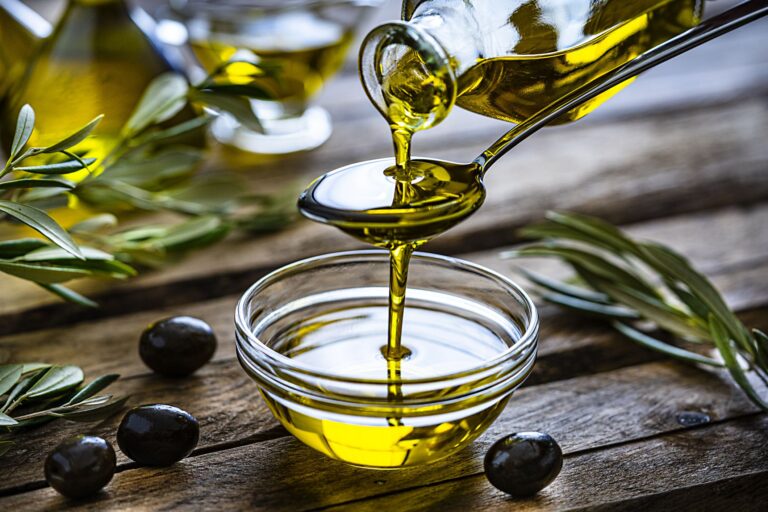
Introduction: A curious choice in the kitchen
You stand in your own kitchen, set to make your favorite meal. You reach for the olive oil, then pause. There’s a bottle of grapeseed oil sitting on the counter, bought on a whim after learning it was a ‘healthier’ option. Is it really though? Is grapeseed oils edible to cook with, or is it just a fad spice with flashy marketing?
Health-oriented chefs have long been drawn to grapeseed oil, and its use continues to grow. Is it its high smoke point, subtle texture, or potential health advantages that have led to grapeseed oil finding a place in kitchens around the world? Perhaps it is something more. Let’s analyze.
Where does grapeseed oil come from?
Unlike other oils that are nut or fruit-derived, grapeseed oil is a wine industry byproduct. Grapes pressed for wine or juice leave seeds behind. These seeds contain lots of oil that is extracted using cold-pressing or chemical solvents.
- Cold-pressed oils are a healthier option since they retain nutrients and do not suggest chemical processing.
- Solvent-extracted oils typically use hexane, which is something some people do not want to eat because of the residue left behind by chemicals.
So, cold-pressed grapeseed oil is the better option for anyone who wants to maintain pure cooking oils.
Why health-conscious cooks love grapeseed oil
It has a high smoke point
One of the most popular benefits of grapeseed oil is that it has a fairly high smoke point of around 420°F (216°C). What this actually refers to is that grapeseed oils can be utilized for high-heat cooking methods like:
- Sautéing
- Stir-frying
- Roasting
- Grilling
Compared to some oils like extra virgin olive oil (smoke point ~375°F), grapeseed oils does not become anywhere near as rapidly damaged, so it is a good alternative for those who cook with high heat.
It’s a neutral-tasting oil
In comparison to olive oil or coconut oil, which are taste oils that add to a dish, grapeseed oils has a neutral taste and is very mild. Because it is so mild, it is best utilized for:
- Salad dressings
- Baking
- Marinades
- Sauces
If you absolutely have to substitute grapeseed oil, neutral oils like canola oil or avocado oil can be used in most recipes.
It’s rich in vitamin E
There is 3.9 mg of vitamin E in a tablespoon of grapeseed oil, and that’s about 26% of your daily needs. Vitamin E is an antioxidant with numerous benefits:
- Protect cells from oxidative stress
- Support skin health
- Boost the immune system
This puts grapeseed oil in the Health Benefits of Vegetable Oil category over more processed oils.
It’s packed with polyunsaturated fats (PUFAs)
Grapeseed oils contains a high percentage of polyunsaturated fats (PUFAs), which are mainly omega-6 fatty acids. These are needed, but it’s beneficial to balance them with a small quantity of omega-3s from foods like flaxseed, walnuts, or fish.
Studies have shown that diets with PUFAs have been shown to decrease LDL (bad) cholesterol and are good for the heart but cause inflammation if there’s a surplus of omega-6 compared to omega-3. It’s thus healthy to incorporate grapeseed oils alongside omega-3 foods.
It contains antioxidants that support heart health
Studies indicate that plant sterols and grapeseed oils antioxidants might possibly reduce risk of heart disease. These ingredients function by:
- Lowering inflammation
- Reducing oxidative stress
- Improving cholesterol levels
More work is required, however, in order to confirm these benefits against other Health Benefits of Seed Oils vs Nut Oils.
How grapeseed oil compares to other cooking oils
| Feature | Grapeseed Oil | Olive Oil | Coconut Oil | Canola Oil |
| Smoke Point | High (~420°F) | Medium (~375°F) | Medium (~350°F) | High (~400°F) |
| Taste | Neutral | Slightly Fruity | Sweet, Nutty | Neutral |
| Vitamin E Content | High | High | Low | Moderate |
| Best Used For | Sautéing, Frying, Baking | Drizzling, Low-Heat Cooking | Baking, Light Cooking | Frying, Baking |
How to store edible oils to preserve freshness
Like all oils, grapeseed oils can spoil if improperly stored. Here’s how to keep it:
- Store in a dark, cool place – Heat and light speed up oxidation.
- Tightly close the lid – Air exposure will spoil the oil.
- Use 6-12 months from opening – The sooner the better!
Proper storage is why your oil will keep longer and keep its nutritional content. Home cooks don’t often realize How to Store Edible Oils for Keeping It Fresh, but just a couple of habits like removing the bottle from direct sun exposure will create wonderful results.
Are there downsides to grapeseed oil?
Although grapeseed oils benefits, it does not exist without some drawbacks. The following are disadvantages:
- High omega-6 levels: If you are already consuming a lot of processed foods, you may not require more omega-6 in your diet.
- Refined forms may contain chemical residues from solvent extraction.
- Not as nutrient-rich as olive oil or avocado oil.
The History of Cooking Oils has led to having more choices available, and while grapeseed oil is helpful, it’s always best to compare it with some other choice like avocado oil or nut oils for an overall diet.
However, as part of an overall diet, grapeseed oil can be an efficient kitchen help.
Conclusion: Should you cook with grapeseed oil?
Grapeseed oil is also becoming popular among health-conscious cooks because of its high smoke point, bland flavor, and potential health advantages. But as with any oil to cook with, always use sparingly and blend with many different foods.
If you are more inclined to cook using hot temperatures or are seeking oil that will not dominate the dishes, then grapeseed oils are a sufficient option. If you want, however, an oil that has well-documented nutritional advantages, maybe extra virgin olive oil or avocado oil may be a better option.
In the end, the most suitable oil for cooking is one that suits your lifestyle and nutritional needs. Will grapeseed oils be a staple in your kitchen, or will you stick with your old standbys?




